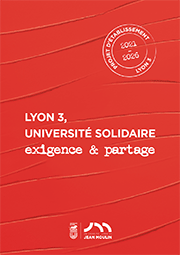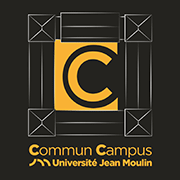AccueilRechercheLes productions scientifiquesThèsesThèses soutenuesThèses soutenues - 2006-2020Thèses soutenues - 2014
-
Partager cette page
- Recherche,
SODEZZA Guillaume
Vers un atlas morphogénétique de la vallée du Gier
Thèse en Géographie-Aménagement soutenue le 14 mars 2014.
Cette thèse est réalisée dans le cadre d'un contrat CIFRE avec l'agence d'urbanisme de l'agglomération stéphanoise, Epures.
L’ambition de cette recherche est de proposer une méthode objective et systématique de lecture de l’héritage matériel d'un territoire, ce qui impose d’abandonner tous critères de sélection discriminant : l’ensemble des traces matérielles qui forme cet héritage peut être déduit de l’analyse d’unités minimales (parcellaire, bâti, réseau viaire) , dont l’apparition, la disparition et la transformation dans le temps peuvent être retracées par l’exploitation de sources spécifiques en particulier des cartes anciennes disponibles. D’autres unités, linéaires, ponctuelles ou surfaciques peuvent être mises en évidence par une confrontation directe avec le terrain.
L'analyse a été réalisée sur la partie ligérienne de l'ancienne vallée industrielle du Gier.
La méthode met en œuvre un Système d'Information Géographique (SIG) historique qui autorise l’intégration, la réinterprétation et le croisement d’informations provenant de sources variées : sérielles, textuelle, cartographiques ou iconographiques. Cet outil facilite le partage et la mise à jour des données produites.
Les résultats obtenus offrent une lecture de l'évolution de la vallée du Gier à l'échelle des unités parcellaires et bâties depuis deux siècles. Ils proposent une nouvelle approche du territoire et de son évolution qui permet de questionner les politiques patrimoniales ou d'aménagement existantes. Etendue à l'ensemble de l'espace stéphanois ou à d'autres territoires, la méthode peut permettre de constituer un observatoire de leur évolution.
This thesis is carried out within the context of a contract CIFRE with the agency of town planning of the agglomeration of Saint-Etienne, Epures.
The purpose of this research is to propose a method objective and systematic to read the material heritage of a territory, which forces to give up all discriminating criteria of selection: the whole of the material traces which forms this heritage can be deduced from the analysis of minimal units (plots, built elements, road network), of which appearance, disappearance and the transformation in time can be recalled by the exploitation of specific sources especially the old maps available. Other units, linear, point or surface can be highlighted by a direct confrontation with the land.
The analysis was carried out on the “ligérienne” part of the old industrial valley of Gier.
The method implements a Geographical Information System (GIS) historical which authorizes integration, the reinterpretation and the crossing of information coming from varied sources: serial, textual, cartographic or iconographic. This tool facilitates the division and the update of the produced data.
The results obtained have offered a reading of the evolution of the valley of Gier on the plot scale for two centuries. They propose a new approach of the territory and its evolution which makes it possible to question the existing development policy or the policy to protect heritage buildings. Extended to the whole space of the agglomeration of Saint-Etienne or to other territories, the method can make it possible to constitute an observatory of their evolution.
Mots-Clés : héritage, patrimoine, territoire, aménagement, paysage, cartographie, Système d'Information Géographique, parcellaire.
Keywords : heritage, territory, land-use planning, landscape, cartography, Geographical Information System, plots
Directeur de thèse : Bernard GAUTHIEZ
Membres du jury :
Christian GRATALOUP, Professeur des universités, Université Paris-Diderot
Jean-Baptiste MINNAERT, Professeur des universités, Université François-Rabelais Tours
Brigitte BARIOL, Déléguée générale de la fédération nationale des agences d’urbanisme
Aurora SCOTTI, Professeur des universités, Politechnico di Milano
Georges GAY, Professeur des universités, Université Jean Monnet Saint Etienne
Bernard GAUTHIEZ, Professeur des université, Université Jean Moulin Lyon 3
Président du jury : Georges GAY
Mention : Très honorable avec les félicitations du jury
Equipe d'accueil : UMR 5600



